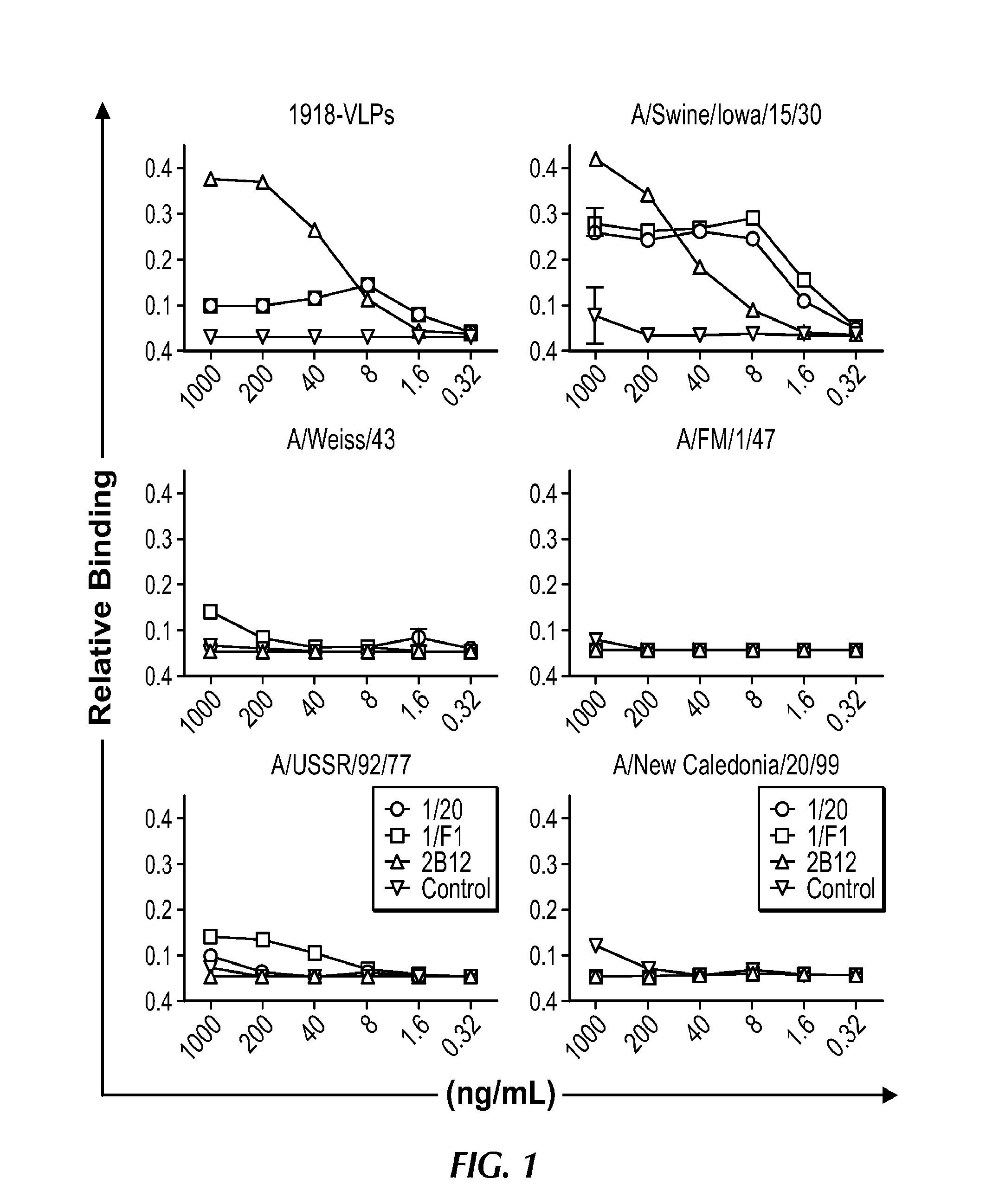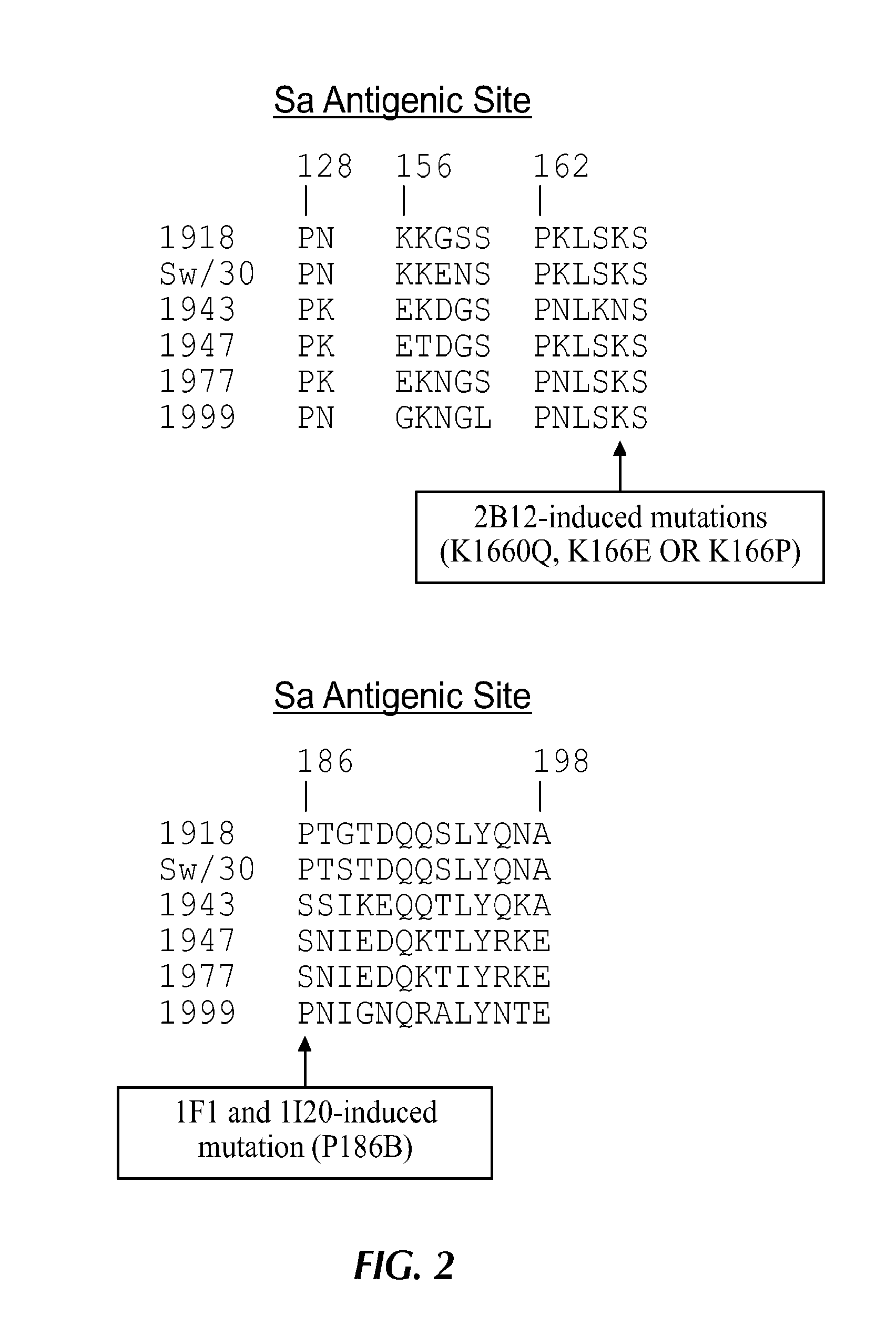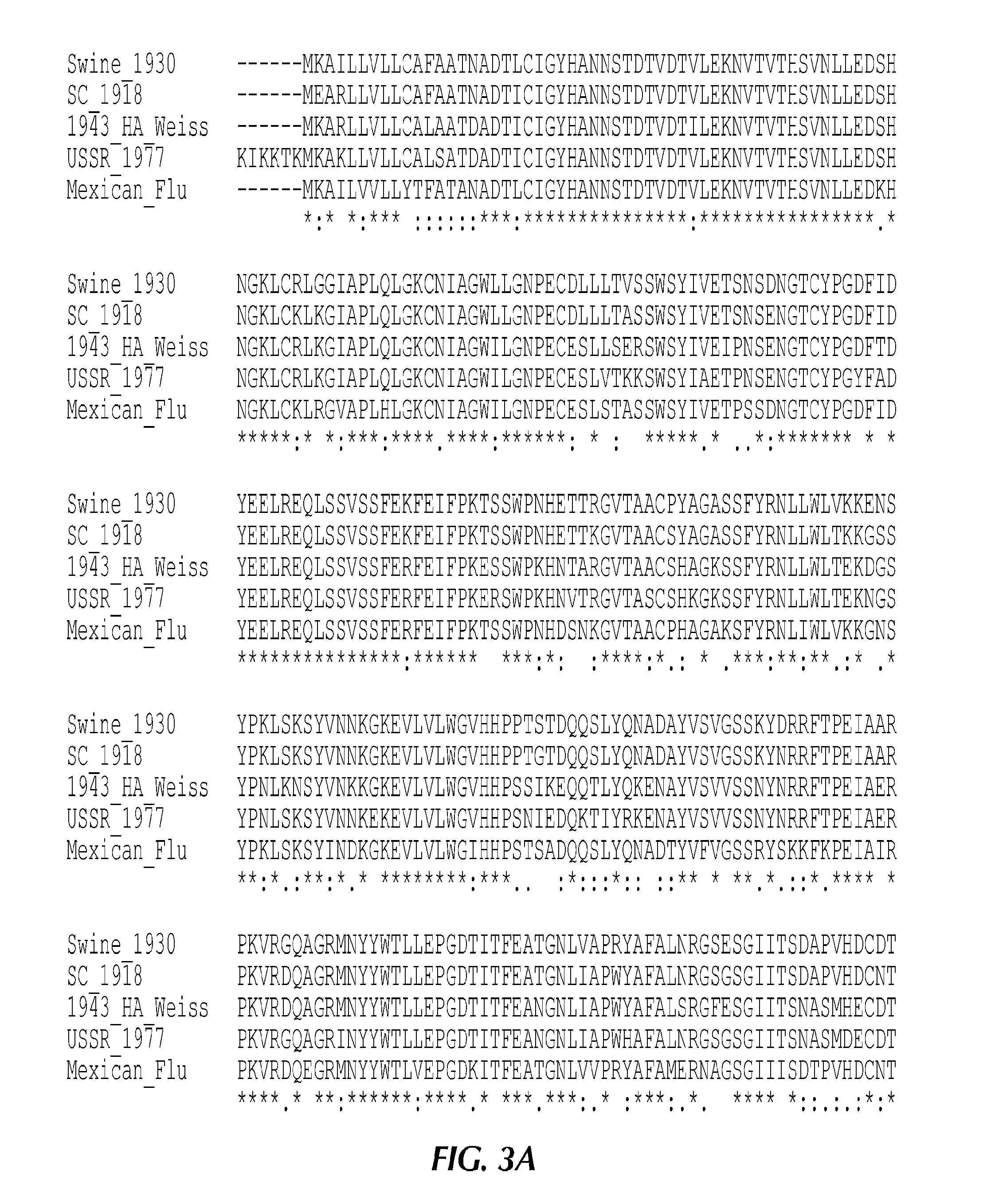Monoclonal antibodies to influenza h1n1 virus uses thereof
- Summary
- Abstract
- Description
- Claims
- Application Information
AI Technical Summary
Benefits of technology
Problems solved by technology
Method used
Image
Examples
example 1
Methods
[0183]Subjects. Volunteers born in 1915 or earlier were recruited. 50 mL of peripheral venous blood was obtained from each subject following written informed consent by a clinical collaborator.
[0184]Antigen. Recombinant A / South Carolina / 1 / 1918 virus HA was generated in a baculovirus expression system and purified, as described (Stevens et al., 2004).
[0185]Production of mAbs. PBMCs were obtained from eight donors by density gradient centrifugation of whole heparinized blood. B cells were transformed in 384-well plates with approximately 1000 B cells per well by in vitro culture in medium with CpG ODN 10103 (Coley) and EBV (supernate from cell line B95.8). Supernates from the resulting cell lines were tested for reactivity with 1918 HA by ELISA. Hybridomas were generated using cells from wells containing reactive lines by fusion to the HMMA2.5 non-secreting myeloma cell line (Posner et al., 1987) using electrofusion followed by HAT / ouabain drug selection, as described (Yu et al...
example 2
Results and Discussion
[0195]Recent studies suggest the 1918 H1N1 influenza virus was of avian origin (Taubenberger et al., 2005; 2006), and is capable of inducing strong systemic cytokine responses that likely contribute to pathogenesis (Kobasa et al., 2007; Kash et al. 2006). Little is known about naturally occurring adaptive immunity to this virus; however, some elderly survivors are still living. The inventors sought to determine whether survivors exhibited evidence of acquired immunity to the virus. Expression of the 1918 HA antigen allowed him to identify and characterize protective antibodies induced by natural exposure of humans to the 1918 pandemic virus.
[0196]The inventors identified a panel of 32 subjects aged 91-101 years (i.e., aged 2 to 12 years in 1918), many of whom recalled a sick family member in the household during the pandemic, which suggested direct exposure to the virus. Of the subjects tested, 100% exhibited serum neutralizing activity against the 1918 virus (...
example 3
Materials & Methods and Results
[0205]Microneutralization assay. Influenza virus was passaged in Madin-Darby canine kidney (MDCK) cells. The titer of virus stocks was determined in MDCK cell culture monolayers by standard plaque assay. 100 TCID50 units of virus was preincubated with dilutions of sera or mAb and then used to infect MDCK cells in 96-well plates, as described (Yu et al., 2008). Six replicate wells were used for each antibody dilution. Neutralizing antibody concentrations were determined and were defined as the reciprocal of the highest dilution of serum where 50% of wells were infected, as calculated by the method of Reed and Muench (Yu et al., 2008). Specific neutralizing activity of mAbs was calculated as the lowest concentration of mAb that displayed neutralizing activity. The minimum concentration of antibody required to neutralize 100 TCID50 units of A / Mexico / 4108 / 09 virus was below 40 ng mL−1 (267 pM) for 2D1 and 160 ng mL−1 (1.1 nM) for 2B12 (Table 5).
[0206]Hemag...
PUM
| Property | Measurement | Unit |
|---|---|---|
| Volume | aaaaa | aaaaa |
| Volume | aaaaa | aaaaa |
| Volume | aaaaa | aaaaa |
Abstract
Description
Claims
Application Information
 Login to View More
Login to View More - R&D
- Intellectual Property
- Life Sciences
- Materials
- Tech Scout
- Unparalleled Data Quality
- Higher Quality Content
- 60% Fewer Hallucinations
Browse by: Latest US Patents, China's latest patents, Technical Efficacy Thesaurus, Application Domain, Technology Topic, Popular Technical Reports.
© 2025 PatSnap. All rights reserved.Legal|Privacy policy|Modern Slavery Act Transparency Statement|Sitemap|About US| Contact US: help@patsnap.com



